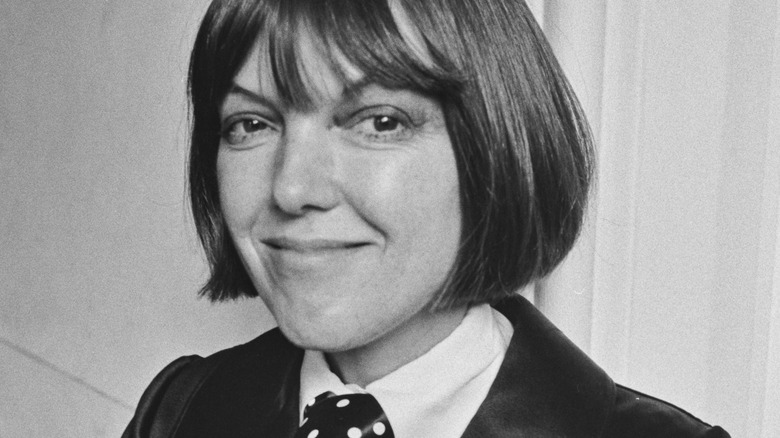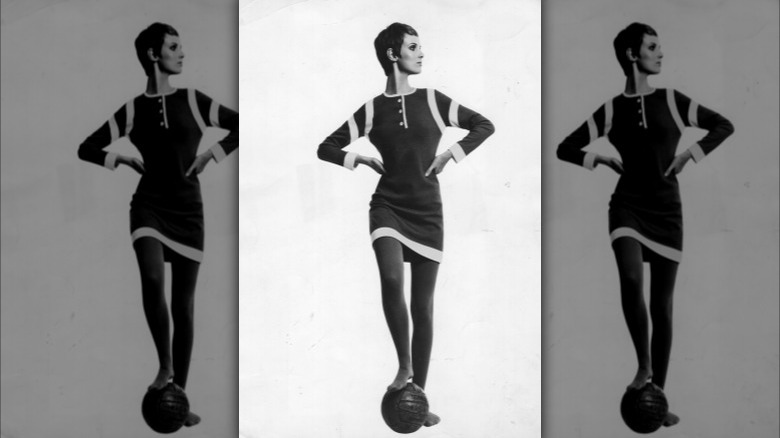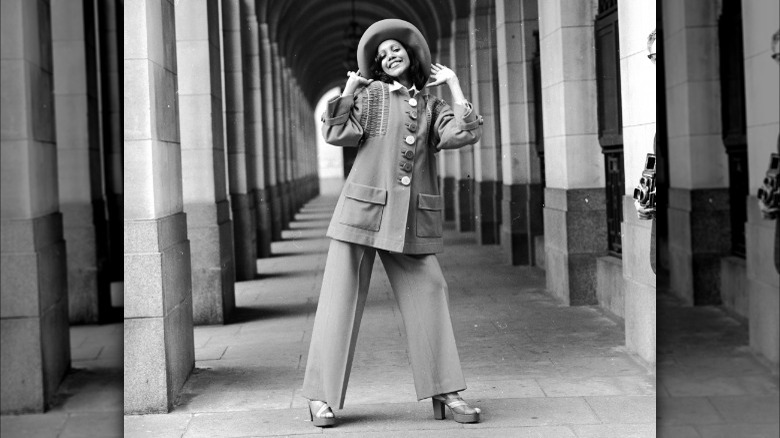Mary Quant's Fashion Legacy Is A Lesson In Women's Liberation - And Great Style
Do you enjoy throwing on a cute miniskirt? How about a lightweight dress in a jersey fabric? Or — and this is a big one — do you appreciate living in a world where it's normalized for women to wear pants? If so, you may owe Mary Quant a major thank you.
Fashion icon Mary Quant passed away on April 13, 2023, aged 93, leaving behind an epic legacy that formed the wardrobe of the modern liberated woman. Quant made her mark with her renowned fashion boutique, Bazaar, located on King's Road in London. Her creations were perfectly in sync with the youthful, creative attitude that fueled London's mod fashion movement, ranging from the infamous miniskirt to tall boots and bold eye makeup. Not only is her work an important chapter in the last 100 years of skirts, but her career also helped redefine what it meant to be a young, stylish woman in the modern world, permanently changing the standards for women's fashion.
The mother of the miniskirt
While there's some dispute over which designer first introduced the miniskirt, the signature piece of the mod '60s, there's no denying that Mary Quant was one of the earliest innovators of the look. Quant had a keen understanding of the young people's role in the rapidly evolving fashion of the decade, once saying that when it came to the invention of the miniskirt, "It was the girls in the street who did it," per Neri Karra's "Fashion Entrepreneurship: The Creation of the Global Fashion Business."
Today, the miniskirt might feel loaded with issues of body image and the hypersexualization of women's fashion, but the original miniskirt has a much different story. During the '60s, women were working more and embracing social lives that took them out of domestic spaces (the FDA approved the first oral contraceptive in 1960). The comfortable movement and flirtatious style of the miniskirt addressed the fashion needs of the modern woman, who would be running to work in the morning and going out with friends in the evening.
Quant's mini dresses were the pure essence of a 1960s liberated woman: they were made from a soft, breathable jersey fabric, had a simple, nonrestrictive shape, and ended just a few inches above the knee. Her dresses had a casual, schoolgirl-inspired style and were meant to be paired with a colorful pair of stretchy tights and flat shoes. At their core, her designs revealed the joyful creativity and reimagined femininity of the women's liberation movement.
Playful style for all women
The impact of Mary Quant's work is much greater than shrinking hemlines. Quant innovated all kinds of new materials and silhouettes that fueled contemporary women's fashion. For instance, her "wet collection" line was made using PVC, a synthetic waterproof vinyl that has a shiny gloss and can be produced in bright, pigmented hues. The use of this material is quite common today, but when Quant did it, the technology was brand new. She was also an enthusiastic user of nylon and other stretchy materials that would create comfortable, breathable women's clothing.
But when it comes to the praise for Mary Quant that can never be sung enough, you have to talk about pants. Now, women's pants existed before Quant entered the fashion scene, but they typically only appeared in informal or private settings. Quant changed that by designing stylish trousers, jumpsuits, and overalls, bringing women's pants into mainstream fashion for every occasion.
Her contributions span practically every element of women's clothing, from loungewear — Skims has nothing on Quant's hot pants bodysuits — to knee-high boots. But above all, Quant was a great equalizer for women's fashion, offering fun, carefree styles to everyone, regardless of their social class or lifestyle. Her work broadened the understanding of femininity and opened the doors for androgynous styles that we wear today. And for that, all of us lovers of miniskirts and gender liberation will be forever indebted to the inimitable Mary Quant.


